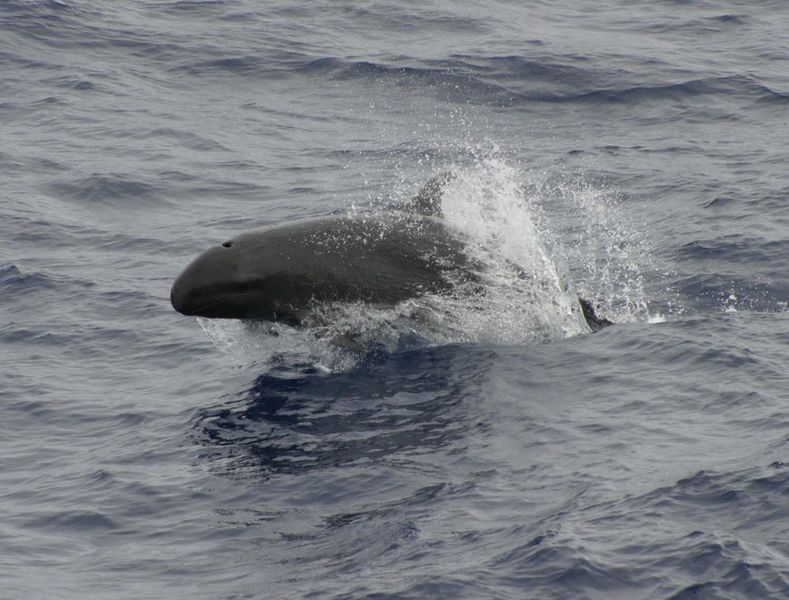
False killer whale porpoising
False killer whales or Pseudorca crassidens are amazing animals that prefer living out in the open ocean in tropical and warm temperate waters. But some populations of false killer whales hang tight near oceanic islands and Hawaii’s false killer whales are one example.
One super cool fact that I learned at the American Cetacean Society conference during a presentation by Robin Baird is that false killer whales hunt together and once a fish is caught they pass it from one whale to another several different times before eating it. Baird’s description reminded me of the way people pass food around a table and then wait until everyone is served before eating. Swimmers and researchers have even been included by false killer whales during the cultural tradition of passing food before a meal!
Like many other whale species, false killer whales have distinct populations that mingle, mate and munch together and typically live in certain geographical areas. Hawaii’s false killer whales live along the coast of the Hawaiian Islands. According to a brochure produced by Cascadia Research, Hawaii’s false killer whales have dwindled from about 500 individuals in the late 1980’s to about 150 today. Living in a coastal area near humans is not easy and for Hawaii’s false killer whales, it has become especially difficult.
There are four main factors contributing to the severe decline in Hawaii’s false killer whale population, all having to do with the food they eat. False killer whales enjoy eating big game fish, the same fish in high demand by humans, including yellowfin tuna, mahi mahi, ono and swordfish. Since humans are also intensely fishing these same species, there seems to be a reduced amount of food available for false killer whales and they often become entangled in fishing gear or ingest hooked fish. Seeing those three words together “ingest hooked fish,” makes me cringe and shudder all at once. Can you imagine eating a hooked fish? And if that wasn’t bad enough, humans also shoot false killer whales to stop them from eating their catch!
Since false killer whales are eating big fish high on the food chain, they accumulate high levels of “persistent organic pollutants” in their bodies. So here’s a quick summary of the problems facing Hawaii’s false killer whales: not enough fish, eating contaminated fish, entangled in or swallowing fishing gear and being shot by humans. That is quite a list, it’s a wonder there are any false killer whales left!
Right now the National Marine Fisheries Service (NMFS) is considering listing “Hawaiian insular false killer whales” as endangered. This is great because it would offer them more protections under the law. The frustrating part is that NMFS has a whole year to make a final decision and that year started on November 17, 2010. A lot can happen in a year, let’s just hope that’s not too long to make a difference for Hawaii’s false killer whales. If you would like to help by submitting positive comments encouraging NMFS to list Hawaii’s false killer whales as endangered, go to www.regulations.gov and search for “false killer whale.”
It is a shame that it takes so long to get a creature saved. With the numbers of false killer whales so low, it seems that they could be extinct before they are put on the endangered list. Unfortunately man is so species centric that he ignores the rights of others. History has proven this time and time again.